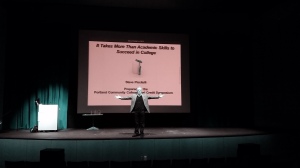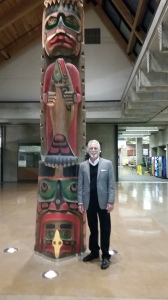Whether talking about the college classroom or the corporate boardroom, conscientious nurturing of authentic relationships improves the chances for effective communication, meaningful connections and powerful creation.
A major work published in 1991 on effective college teaching emphasized the importance of reciprocity, cooperation and connections in the teaching and learning environment.
Professor Emeritus Joe Cuseo often refers to the importance of personal validation and social interaction as critical ingredients in the student success mix.
My former dean, Dr. John Wall, emphasized the importance of developing rapport with students.
On my list of the “7 Rs for Success” the first spot is occupied by “relationships.”
In a major study (1999), Gallup surveyed more than 80,000 employees to identify those dimensions that continually mark the great places to work. Of the twelve dimensions they discovered in their research, I noted at least five that focused on connectedness with at least one other person on the team.
Do you see the connection in the above? Without a doubt effective collaboration continually appears as the keystone for success. Whether talking about the college classroom or the corporate boardroom, conscientious building of authentic relationships improves the chances for effective communication and meaningful creation.
I had the opportunity to experience this basic teaching truism this past Friday in Portland, Oregon. I had the honor to deliver the keynote address to the Portland Community College-Dual Credit Symposium. In the audience were hundreds of high school faculty who taught high school courses that also allowed their students to earn college credit (hence, “dual credit). College faculty (who serve as mentors and liaisons between the high schools and college) joined in the event as well.
While my emphasis in the keynote focused on non-academic factors of student success, my underlying theme was collaboration. I challenged the audience to identify the bright spots and not-so-bright spots of their collaborative arrangements. In a massive program that touches the lives of thousands of students in more than fifty area high schools each year, it is critical that open lines of communication exist. And, as I mentioned to them, this has to go beyond an occasional email blast. There has to be a concerted and sincere effort to create opportunities for communication and creation. In such a large operation, it can become easy to focus on checking off bureaucratic checklists—and miss real opportunities to collaborate.
Tony Hsieh speaks about the importance of “encouraging collisions to maximize serendipity.” Collisions, in this metaphor, provide opportunities for personal and workplace growth and recognition. This is what our transformational leaders do.
Unfortunately, often poor managers orchestrate crashes not collisions.
Video recommendation for the week:
In the following video presentation, Hsieh explains one of his new projects that focuses on ROC—return on community. (Hsieh speaks of collisions specifically beginning at 11 minutes into the video.)
Tony Schwartz of The Energy Project states, “Any organization that fails to build a robust learning program for its employees–not just to increase their skills but also to develop them as human beings–ought to expect that its people won’t get better at their jobs over time and may well get worse.”
And the October (2015) issue of Fast Company magazine highlighted (pp. 68-70) four apps that give the leaders yet another opportunity to gauge the mood and connection of their employees to the workplace culture:
- Niko Niko
- Culture Amp
- Round Pegg
- Mood Ring
What is the conversation in your work space–and what are the consequences?
How does your workplace foster collisions for collaboration rather than crashes of confusion?
Make it a wonderful week—H.T.R.B. as needed.
You can find my podcast series at Growth and Resilience (http://stevepiscitelli.com/video-media/podcasts).
Check out my website (http://www.stevepiscitelli.com/programs.html) for programming information as well as details about upcoming webinars (http://www.stevepiscitelli.com/webinars).
My books Choices for College Success (3rd edition) and Study Skills: Do I Really Need This Stuff? (3rd edition) are published by Pearson Education.
(c) 2015. Steve Piscitelli. All rights reserved.



Stevie Wonder-
Thanks for the hat tip in your post AND I’m excited to check out the apps you listed. Talk about connections and collisions: my son saw the Tony Schwartz book that you gave to me on my work desk at home last week and said, “Hey, I know that guy..I saw a TED talk he gave..” which he followed up by texting me the link. Relationship building + Learning together— how cool is that?!?! Looking forward to seeing you soon. -John
John J. Wall, Ph.D.
Dean of Arts and Sciences, Downtown Campus
Florida State College At Jacksonville
101 West State Street, Room A-1193
Jacksonville, FL 32202
Phone: (904) 632-3026
From: Steve Piscitelli–Growth and Resilience
Reply-To: Steve Piscitelli–Growth and Resilience
Date: Sunday, October 11, 2015 at 8:41 AM
To: “Wall, John J.”
Subject: [New post] (#281) Collisions for Collaboration or Crashes of Confusion?
stevepiscitelli posted: “Whether talking about the college classroom or the corporate boardroom, conscientious nurturing of authentic relationships improves the chances for effective communication, meaningful connections and powerful creation. A major work published in 1991 on e”
LikeLike
Sounds like your son might be following your lead as a leader. 🙂
LikeLike
Pingback: (#359) Collisions and Serendipity | Steve Piscitelli